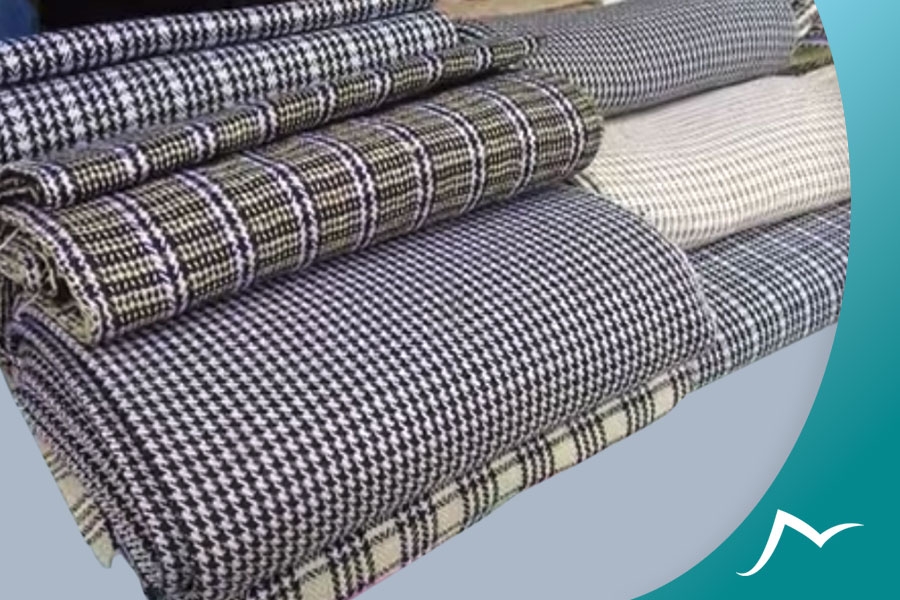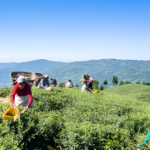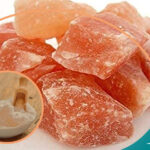Nepal has a rich history of traditional crafts, and one of the most fascinating is the craft of Allo cloth. Allo cloth, nettle cloth, is a unique and essential fabric in Nepali culture. Made from the fibers of the Allo (Girardinia diversifolia) plant, Allo cloth is handcrafted using traditional methods and techniques that have been passed down for generations. This fabric has a special significance in Nepal, which is considered an essential part of the country’s cultural heritage. In this article, we’ll explore the craft of Allo cloth in Nepal, from harvesting the plant to weaving the fabric.
Allo cloth has been a part of Nepali culture for centuries. In the past, it was used to make clothing for the Nepali royal family, and Nepali soldiers also wore it as a form of armor. Today, Allo cloth is still an essential part of Nepali culture and is used to make various clothing items such as hats, shawls, coats, and jackets. Now Allo cloth is slowly being demanded by fashion industries.
The Allo plant is native to the Himalayan region and has been used for centuries to make fiber for textiles. The process of making Allo cloth is a labor-intensive and time-consuming process, as the fibers of the plant must be hand-processed to make the thread that is used to weave the fabric.
Harvesting and Processing Allo Fibers
The Allo plant grows wild in the Himalayan region and is usually harvested during the summer months. The outer bark of the stem is removed, and the inner bark is then separated from the stem. The fibers are then boiled in water to soften them and remove impurities.

Once the fibers have been boiled, they are washed thoroughly to remove any remaining impurities. After washing, the fibers are beaten to soften them further and make them more pliable. The fibers are then spun into thread using a spinning wheel or a drop spindle.
Weaving Allo Cloth
Once the thread has been spun, it is woven into cloth using a traditional Nepali loom. The loom is usually made of wood and is operated manually. The threads are stretched vertically on the loom, then horizontal threads are woven between them to create the cloth.
The process of weaving Allo cloth is time-consuming and requires much skill. It can take several days to weave a single piece of cloth, depending on the size and complexity of the design. The weavers often work in groups, each responsible for a different part of the process.
Dyeing Allo Cloth
Allo cloth is traditionally dyed using natural dyes made from plants and minerals found in the Himalayan region. Nepal’s most common natural dyes are indigo, madder root, and pomegranate. The dyeing process is usually done after the cloth has been woven and is submerged in the dye bath for several hours to achieve the desired color.
The Significance of Allo Cloth in Nepali Culture
Allo cloth is deeply embedded in the cultural fabric of Nepal. The significance of Allo cloth lies not just in its functionality but also in its history and cultural importance. Allo cloth has been used for centuries by Nepali people to make clothing, bags, and other household items. The fabric is made from the bark of the Himalayan nettle plant, which grows abundantly in the hills of Nepal.
Allo cloth is also essential to traditional Nepali ceremonies, such as weddings and funerals. It is believed to bring good luck, prosperity, and protection from evil spirits. It is customary for Nepali brides to wear Allo cloth on their wedding day as a symbol of their cultural heritage and identity.
Allo cloth is not just a fabric but is also a symbol of Nepali culture and tradition. The production of Allo cloth is a labor-intensive process that requires great skill and patience. By continuing to use and preserve the tradition of Allo cloth making, Nepali people can keep their cultural heritage alive and pass it on to future generations.
Allo Plant and its Cultivation in Nepal
The Allo plant, also known as the Himalayan nettle, is a perennial plant native to the Himalayan region. It grows at high altitudes of up to 3,500 meters and is typically found in mountainous areas of Nepal. The plant is harvested for its fibers, which make Allo cloth.
The Allo plant is cultivated in Nepal by local farmers. It is typically grown on small plots of land and is often intercropped with other crops such as maize and millet. The plant is harvested in the summer and early fall when the fibers are the strongest. The plant is then cut down, and the fibers are extracted using the retting process.
Challenges Faced by Nepali Allo Farmers and Artisans
Despite the many benefits of Allo cloth production in Nepal, several challenges are faced by local farmers and artisans. Here, we will explore some challenges and obstacles that Allo farmers and artisans face, including competition from synthetic fabrics, limited awareness and support for Allo cloth production, and limited access to international markets.
Competition from Synthetic Fabrics and Mass-Produced Clothing
One of the biggest challenges faced by Nepali Allo farmers and artisans is competition from synthetic fabrics and mass-produced clothing. Synthetic fabrics are cheaper and easier to produce than Allo cloth, and many consumers need to be aware of the benefits of buying locally-made products.
Limited Awareness and Support for Allo Cloth Production
Another challenge faced by Nepali Allo farmers and artisans is limited awareness and support for Allo cloth production. Many consumers need to be made aware of Allo cloth’s cultural significance and benefits, and these products need more promotion and marketing. This has resulted in a lack of interest in Allo cloth, which in turn affects the livelihoods of local farmers and artisans.
Limited Access to International Markets
Nepali Allo farmers and artisans need more access to international markets. While there is a growing interest in sustainable and eco-friendly products, many consumers must know Allo cloth’s benefits. This makes it difficult for local farmers and artisans to sell their products internationally, which limits their income and growth opportunities.
What needs to consider in producing the finest Allo cloth
Allo cloth is a highly prized fabric for its beauty and cultural significance. However, producing the finest Allo cloth requires careful consideration of various factors. Here are some essential steps to follow:

Selecting High-Quality Allo Fibers
To ensure the production of exceptional Allo cloth, it’s vital to source high-quality Allo fibers. These fibers should be carefully selected and sorted by hand to ensure that only the finest ones are used. This meticulous process helps to guarantee that the final product will be of outstanding quality.
Preparing the Fibers
The preparation of the fibers is a crucial step in the production process. The fibers must be washed, boiled, and beaten to eliminate impurities and make them soft and pliable. The beating process is particularly important because it helps align the fibers and create a smooth and even texture.
Weaving with Skill and Patience
The weaving process requires great skill and patience. The weaver must ensure that the fibers are evenly distributed and that the tension consistently creates a uniform cloth. This process can take several days or even weeks, depending on the cloth’s size and the design’s intricacy.
Using Natural Dyes
The dyeing process is crucial to creating vibrant and long-lasting colors in Allo cloth. Natural dyes are typically used, and the colors can be achieved using different plants, roots, and bark. By using natural dyes, artisans can create unique and rich colors that add to the beauty and value of the cloth.
Finishing Touches
The finishing process involves washing and ironing the cloth to give it its final texture and appearance. This process can also involve adding embellishments, such as embroidery or applique. Adding these final touches can elevate the Allo cloth into a work of art.

Overall, producing exceptional Allo cloth requires combining traditional knowledge, skill, and attention to detail. By following these essential steps, artisans can create beautiful and high-quality Allo cloth treasured for its beauty and cultural significance.
FAQs
What is Allo cloth?
Allo cloth is a traditional fabric made from the fibrous bark of the Himalayan nettle plant. It is a sustainable and eco-friendly textile known for its durability, warmth, and antibacterial properties.
How is Allo cloth made?
Allo cloth is made from the bark of the Himalayan nettle plant. The bark is soaked in water, boiled, and beaten to extract the fibers. The fibers are then spun into thread and woven into the fabric using a traditional handloom. The process of making Allo cloth is labor-intensive and requires skilled craftsmanship.
How much does Allo cloth cost in Nepal?
The price of Allo cloth in Nepal varies depending on the seller’s quality, design, and location. On average, Allo cloth can cost anywhere between NPR 500 to NPR 5000 per meter.
Is Allo cloth available in different colors?
Allo cloth is available in a variety of colors. Traditionally, it was only available in natural shades of brown, beige, and white. But now, it is dyed in different colors using natural dyes.
What are the different types of Allo cloth available in Nepal?
There are various types of Allo cloth available in Nepal, such as plain Allo cloth, patterned Allo cloth, and embroidered Allo cloth. Some popular Allo cloth products include shawls, scarves, bags, and hats.
Is Allo cloth machine-washable?
Allo cloth is a durable fabric that can withstand machine washing. However, to maintain its texture and color, washing Allo cloth by hand using mild soap and cold water is recommended.
Can Allo cloth be used for making clothes?
Allo cloth can be used to make jackets, pants, and dresses. It is a breathable fabric that keeps you warm in winter and cool in summer.
Is Allo cloth sustainable and eco-friendly?
Allo cloth is sustainable and eco-friendly. It is made from the bark of the Himalayan nettle plant, which grows abundantly in the Himalayas.
Conclusion
The craft of Allo cloth in Nepal is a testament to the country’s rich cultural heritage and traditional crafts. From harvesting the fibers of the Allo plant to weaving the cloth on a traditional loom, the process of making Allo cloth requires skill, patience, and dedication. The beauty and quality of Allo cloth are a testament to the craftsmanship of Nepali weavers, and its popularity in the global fashion industry is a tribute to the enduring appeal of this traditional fabric.
If you would like to read similar blog posts on pottery craft, please follow the link:
Clay to Creation: The Art of Pottery in Nepal


